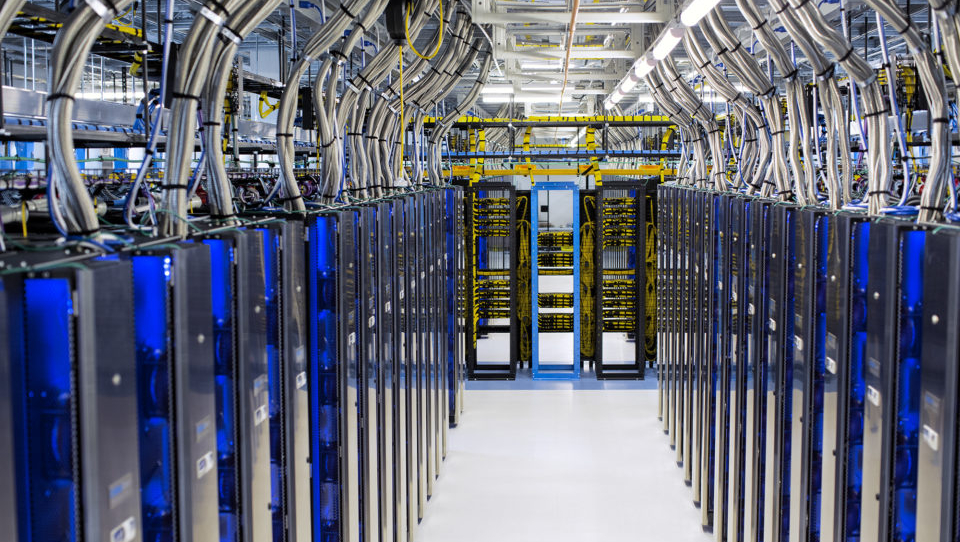 AI
AI
 AI
AI
 AI
AI
Google LLC today announced an expansion of its partnership with Anthropic PBC, a generative artificial intelligence startup in which it recently agreed to invest up to $2 billion.
The news comes a day after Microsoft Corp. and Oracle Corp., two of Google’s top rivals in the cloud market, detailed an AI alliance of their own. As part of the deal, Microsoft is using Oracle’s infrastructure to power Bing’s AI search features. The collaborations underscore the important role that partnerships play in cloud providers’ AI strategies.
Anthropic offers a large language model called Claude that it positions as an alternative to OpenAI LP’s ChatGPT. The model has helped the company secure an investment worth up to $2 billion from Google, as well as billions of dollars in additional funding from other backers, including up to $4 billion from Amazon.com Inc. As part of the expanded partnership the companies detailed today, Anthropic will run Claude on Google Cloud’s TPU v5e chips.
The AI developer plans to use the chips for inference, or the task of processing the requests users send to Claude. The TPU v5e is the fifth iteration of an internally developed machine learning chip Google debuted in 2016. It’s 2.3 times faster than the previous, fourth-generation processor in the series, according to benchmark results released today against the backdrop of the Anthropic deal.
Each TPU v5e includes four compute modules optimized to perform matrix multiplications. Those are the mathematical operations AI models use to turn user prompts into output such as text and code. The TPU v5e also includes scalar and vector circuits, which perform supporting calculations, as well as high-speed memory.
Complex language models such as Claude require a large number of processors to run. To address that requirement, the servers that house TPU v5e chips in Google’s cloud data center feature a technology called Multislice. It allows customers to deploy AI models across upwards of tens of thousands of chips.
“This expanded partnership with Anthropic, built on years of working together, will bring AI to more people safely and securely, and provides another example of how the most innovative and fastest-growing AI startups are building on Google Cloud,” said Google Cloud Chief Executive Officer Thomas Kurian.
Bloomberg reported today that Anthropic has agreed to spend more than $3 billion on Google Cloud services over the next four years. The deal includes not only TPUs but also other offerings.
According to Google, Anthropic will protect its cloud environment against hackers using Chronicle Security Operations. That’s a Google Cloud service designed to ease the task of detecting cyberattacks. Anthropic is also adopting Security Command Center, a related tool that helps companies fix vulnerabilities and insecure configuration settings in their cloud environments.
Anthropic has used Google Cloud since 2021, the year it launched. The AI developer operates one of the world’s largest Google Kubernetes Engine clusters, which may be included in the $3 billion cloud deal the companies have reportedly inked. Anthropic also uses data management services such as BigQuery to power its internal analytics projects.
The day before Google and Anthropic announced their expanded partnership, Oracle disclosed that its OCI cloud platform is being used by Microsoft to power Bing. The latter company also relies on hardware resources in its own Azure platform to run the search engine.
Microsoft is using AKS, Azure’s Kubernetes service, to manage the infrastructure it rents in Oracle’s data centers. Instructions from AKS travel to those data centers via a second service called Oracle Interconnect for Azure. The latter offering provides the ability to create private network links between Azure and Oracle’s cloud platform.
The companies didn’t specify what type of cloud infrastructure Microsoft is using as part of the deal. Given that the partnership focuses on Bing’s AI features, the tech giant likely uses Oracle’s graphics card instances. The pricey Nvidia Corp. graphics cards necessary for enterprise AI projects are still in short supply, which may be one of the reasons Microsoft has opted to use a competitor’s cloud platform.
Last year, Oracle bought tens of thousands of top-end H100 and A100 chips from Nvidia for use in its cloud platform. Users can attach up to eight of the chips to each cloud instance they provision. For customers with particularly demanding AI workloads, Oracle provides the ability to provision clusters with up 4,096 instances that can accommodate 32,768 A100 or 16,384 H100 chips.
THANK YOU